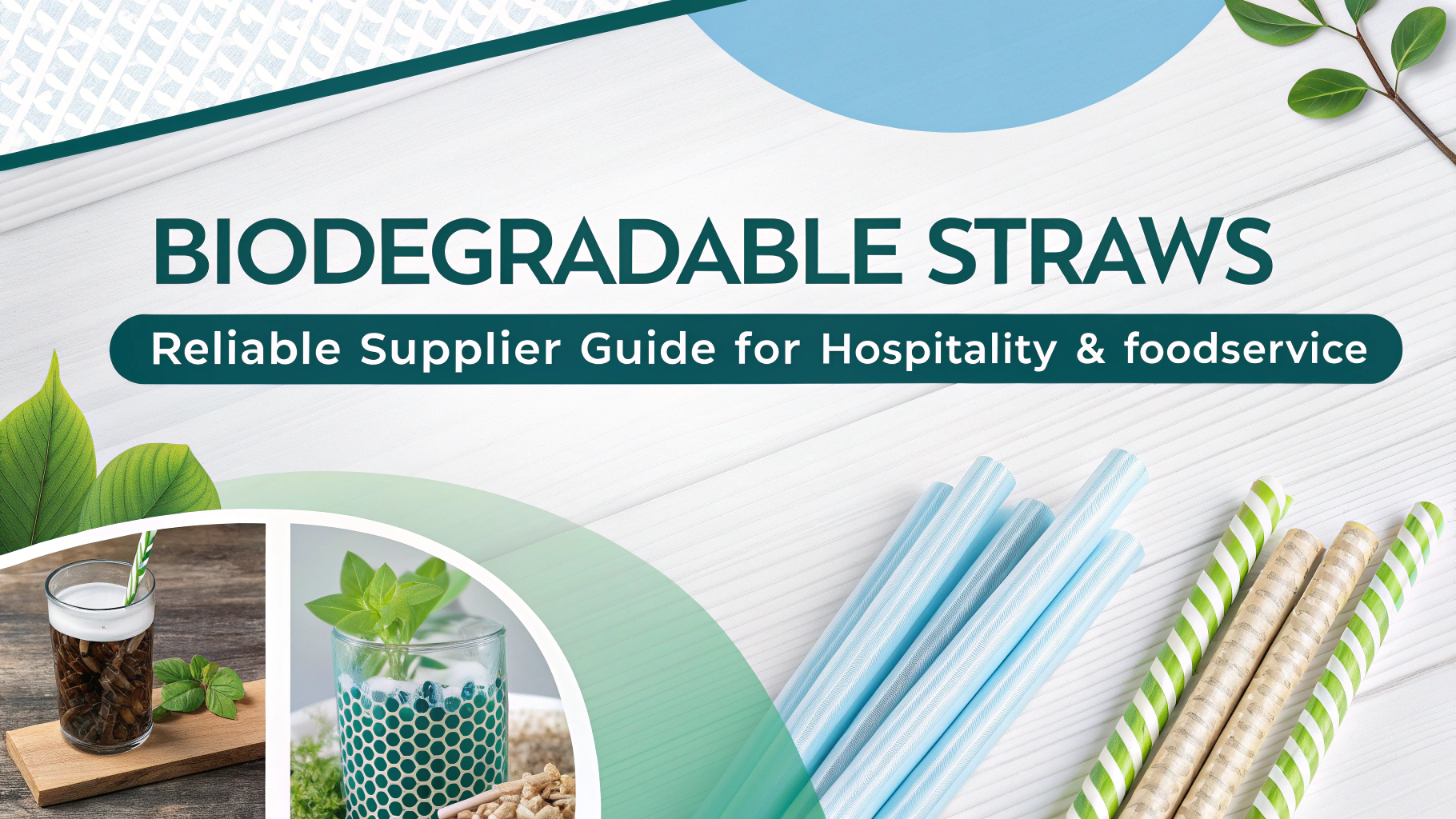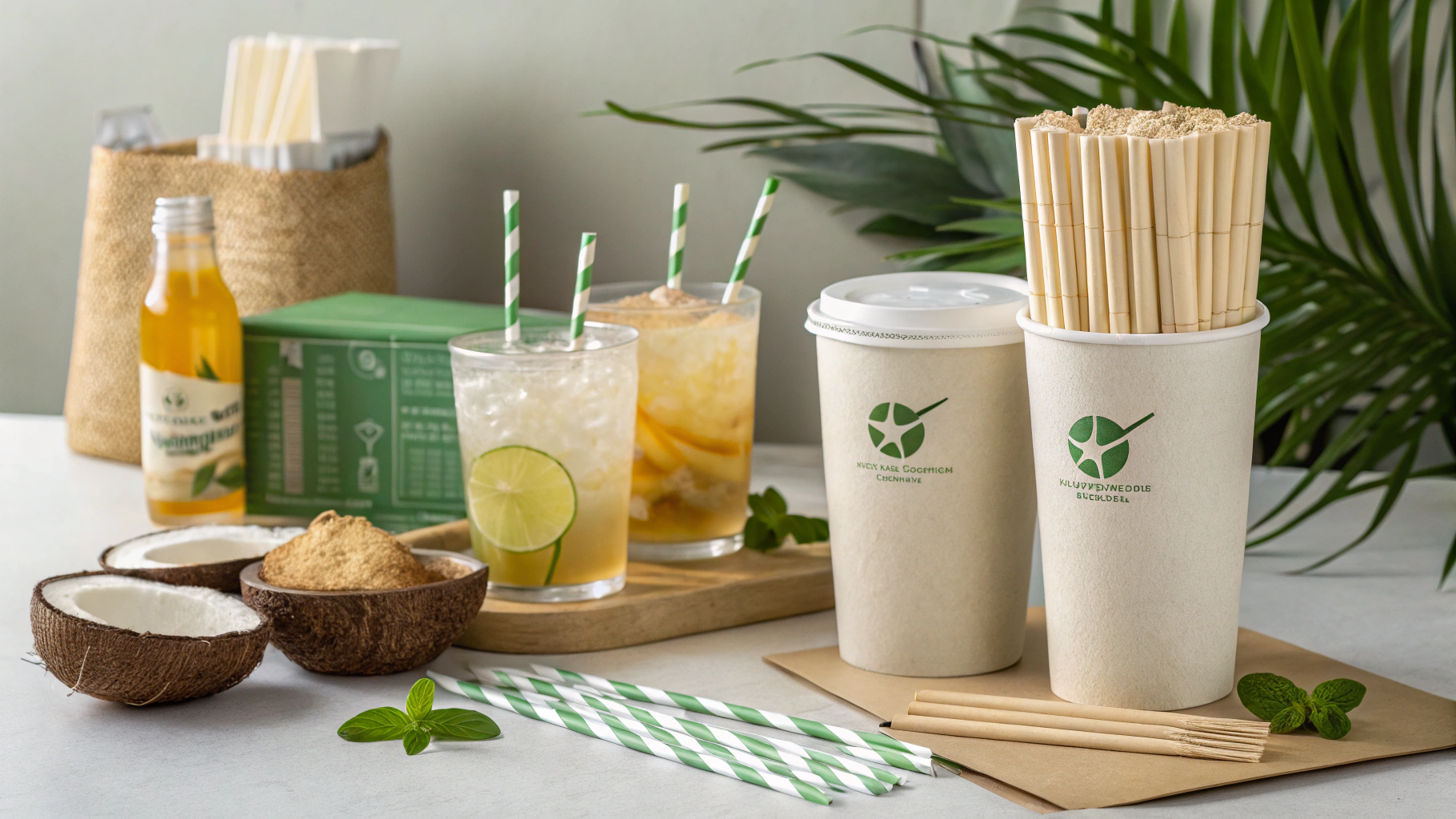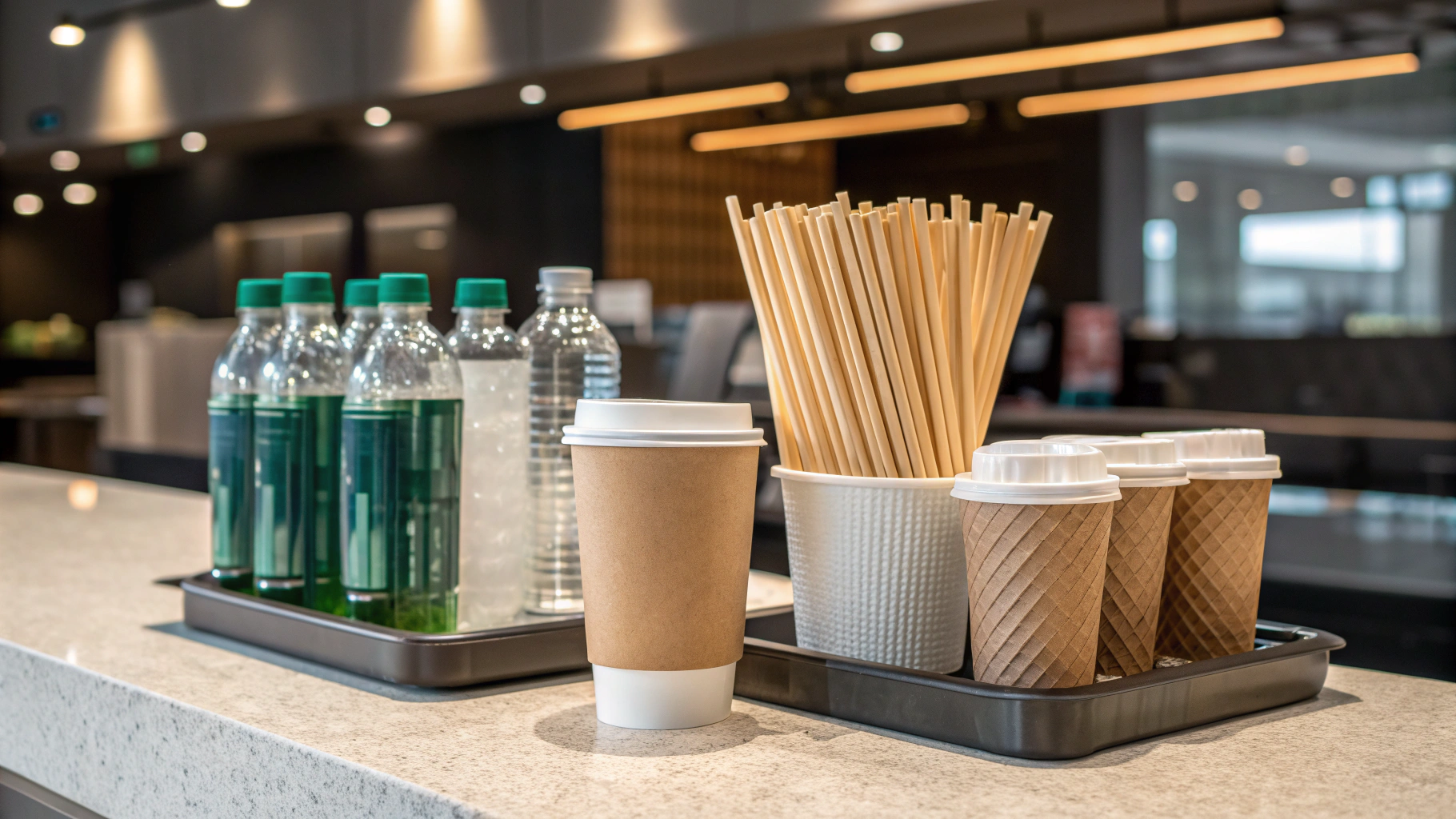For procurement managers, operations directors, and sustainability officers in hospitality & foodservice.
In an era defined by urgent environmental concerns, businesses worldwide face escalating pressure to embrace sustainable practices. The global plastic crisis is particularly pressing, with projections indicating that unchecked production could see global plastics use skyrocket to 1356 million tons by 2060 (OECD, 2022). Amidst this backdrop, Polylactic Acid (PLA) straws have emerged as a seemingly simple “eco-friendly” solution, offering a bio-based alternative that many businesses swiftly adopt. However, for B2B buyers and operational leaders, this perception often masks significant, often overlooked, operational and compliance complexities.
The critical industry challenge lies in a widespread misconception: the belief that PLA straws readily biodegrade in all environments. The stark reality is that PLA fundamentally requires specialized industrial composting facilities, operating at precise temperatures between 50-70°C and designed for decomposition within 90-180 days, for effective breakdown (European Bioplastics, 2023). Without this crucial infrastructure, PLA straws persist much like conventional plastics. For procurement and operations, the immediate impact can be severe: brand reputation damage, accusations of “greenwashing,” and potential regulatory penalties if disposal protocols are not rigorously managed (Ellen MacArthur Foundation, 2017).
PLA straws require specific industrial composting, posing a significant challenge for widespread adoption in hospitality.
The Industrial Composting Conundrum: A Critical Dependency
Understanding PLA’s end-of-life reality is paramount. PLA straws are indeed industrially compostable, breaking down into water, CO2, and organic matter under controlled high-temperature and microbial conditions. Yet, the stark reality in the U.S. reveals fewer than 200 industrial composting facilities accept compostable plastics, leading to the unfortunate truth that most PLA ends up in landfills, where it persists indefinitely. This infrastructure gap directly impacts the viability of PLA as a truly sustainable single-use solution for large-scale operations. Marketing PLA as broadly “biodegradable” without clear, actionable disposal guidance not only misleads consumers but also exposes businesses to regulatory scrutiny under increasingly stringent environmental claims.
Moreover, the peril of mis-sorting presents significant contamination and cost implications. PLA straws cannot be recycled with traditional plastics like PET or PP due to their lower melting point, which contaminates conventional recycling streams and degrades the quality of recycled materials. This creates an operational burden: businesses must implement robust internal sorting guidance and provide distinct waste streams for PLA to prevent contamination or incur higher general waste disposal costs. The challenge is amplified for public-facing businesses, where clear labeling and consumer education are vital to prevent incorrect disposal at the point of consumption. To navigate this, businesses should look for products certified by standards like EN13432 (EU) or ASTM D6400 (US), which are crucial first steps, though not a substitute for proper end-of-life management. Engaging waste management partners to ensure collected PLA is directed to appropriate industrial composting facilities is essential, preventing it from ending up in landfills or incinerators.

Proper sorting and industrial composting are non-negotiable for PLA straws to achieve their environmental benefits.
Navigating the EU Market and Strategic Alternatives
The EU’s proactive stance on waste management and circular economy initiatives has introduced a significant market entry barrier. Under the Single-Use Plastics Directive (SUPD) (Directive (EU) 2019/904), a comprehensive ban on single-use plastic straws, including PLA, came into effect across EU Member States on July 3, 2021. The EU explicitly classifies PLA as a plastic due to its chemical modification, irrespective of its bio-based origin, thus subjecting it to the same strict bans. While narrow exceptions exist (e.g., medical use in hospitals), the directive’s overarching goal is to significantly reduce plastic pollution, particularly marine litter, and promote reusable alternatives. This pioneering stance by the EU is influencing regulatory trends worldwide, with other regions implementing or considering similar bans. For businesses operating or planning to enter the EU market, relying on PLA straws can lead to immediate market access restrictions, customs seizures, product delisting, and greenwashing fines. It underscores the strategic imperative for global supply chains to diversify straw material sourcing and prioritize compliance with evolving international plastic regulations.

Beyond PLA, a range of sustainable straw alternatives exists for B2B buyers. A comparative analysis highlighting operational performance, cost-effectiveness, environmental footprint, and end-of-life solutions is crucial for informed decision-making:
| Saman tipi | Temel Özellikler | Compostability/Recyclability | Thermal Stability | Durability/User Experience | Market Suitability/Compliance | Cost per Unit (Relative) |
|---|---|---|---|---|---|---|
| Pla | Bio-based (corn/sugarcane) | Industrial Compostable Only | Low-Medium (softens >60°C) | Good (similar to plastic) | Banned in EU; Requires special disposal | Medium-High |
| Kağıt | Cellulose-based | Home/Industrial Compostable | Low (softens quickly) | Variable (can get soggy) | Widely accepted; No EU ban | Low-Medium |
| Wheat/Agri-waste | Natural, plant-fiber derived | Home/Industrial Compostable | Yüksek | Good (natural texture) | Growing acceptance | Orta |
| Bamboo (single-use) | Natural bamboo | Home/Industrial Compostable | Yüksek | Rigid, natural feel | Niche, growing | Medium-High |
| Reusable Options (Metal, Glass, Silicone) | Durable, long-lasting | Not applicable | Yüksek | Excellent | Ideal for dine-in settings | High (initial) |
For businesses committed to genuine sustainability, evaluating alternatives such as eco-friendly bamboo fiber straws offers a robust solution for reducing plastic waste and ensuring compliance. When considering bio-based alternatives, it’s also worth exploring howsugarcane straws are evaluated for their eco-friendliness, offering another avenue for reducing reliance on traditional plastics. Building a resilient, compliant supply chain necessitates conducting thorough life cycle assessments (LCA) for all straw alternatives to understand their true environmental impact from production to disposal, moving beyond single-point metrics. Partnering with suppliers committed to verifiable sustainability, transparent sourcing, and robust waste management support is indispensable. Furthermore, for specific hospitality needs, a dedicatedB2B guide to eco-friendly cocktail strawscan provide tailored insights.
Diversifying straw material sourcing is crucial for global supply chain compliance and market access.
Driving Business Advantage Through Proactive Sustainability
Proactive adoption of truly sustainable straw solutions, coupled with transparent disposal strategies, positions businesses for a significant competitive advantage in a rapidly evolving market. The global PLA degradable straw market, despite its complexities, is projected to reach $1.8 billion by 2033, exhibiting a 15% Compound Annual Growth Rate (CAGR), underscoring the demand for alternatives. This value proposition extends beyond compliance; it encompasses enhanced brand reputation, strengthened consumer trust, and mitigated regulatory risks, all translating directly to commercial gains. Sustainable choices can lead to reduced operational friction and potential long-term cost savings by avoiding penalties and inefficient waste management.

The journey toward sustainable operational excellence begins with a clear understanding of the nuances inherent in supposedly “eco-friendly” products like PLA straws. B2B decision-makers must move beyond surface-level claims and engage in a deeper assessment of their single-use plastic strategies. Expert consultation is essential for navigating complex compliance landscapes, particularly in dynamic markets like the EU, and identifying the most commercially viable and genuinely sustainable alternatives for your specific needs.
Proactive sustainability offers significant competitive advantages and mitigates risks for B2B operations.
Ready to Optimize Your Supply Chain?
Ready to optimize your supply chain and ensure unwavering compliance? Schedule a complimentary 30-minute consultation with our sustainability experts to receive a tailored assessment and strategic roadmap for your single-use packaging needs.Schedule Your Free Consultation Today
Sıkça Sorulan Sorular (SSS)
What is the primary challenge with PLA straws for businesses?
The primary challenge is that PLA straws require specialized industrial composting facilities to break down effectively. Without this infrastructure, they persist like conventional plastics, leading to potential greenwashing accusations and disposal issues.
Why can’t PLA straws be recycled with traditional plastics?
PLA straws have a lower melting point than common plastics like PET or PP. If mixed, they contaminate traditional recycling streams, degrading the quality of recycled materials and increasing operational costs for waste management.
Are PLA straws banned in the European Union?
Yes, under the EU Single-Use Plastics Directive (SUPD) (Directive (EU) 2019/904), PLA is classified as a plastic and is subject to the comprehensive ban on single-use plastic straws across EU Member States since July 3, 2021.
What are some truly sustainable alternatives to PLA straws for B2B buyers?
Sustainable alternatives include paper, wheat/agri-waste, and single-use bamboo straws, which are often home or industrially compostable. Reusable options like metal, glass, or silicone are ideal for dine-in settings.
How can businesses avoid ‘greenwashing’ when choosing sustainable straws?
Businesses should move beyond surface-level claims by understanding the true end-of-life requirements (e.g., industrial composting for PLA), implementing robust sorting guidance, and partnering with suppliers committed to transparent sourcing and verifiable sustainability certifications like EN13432 or ASTM D6400.






